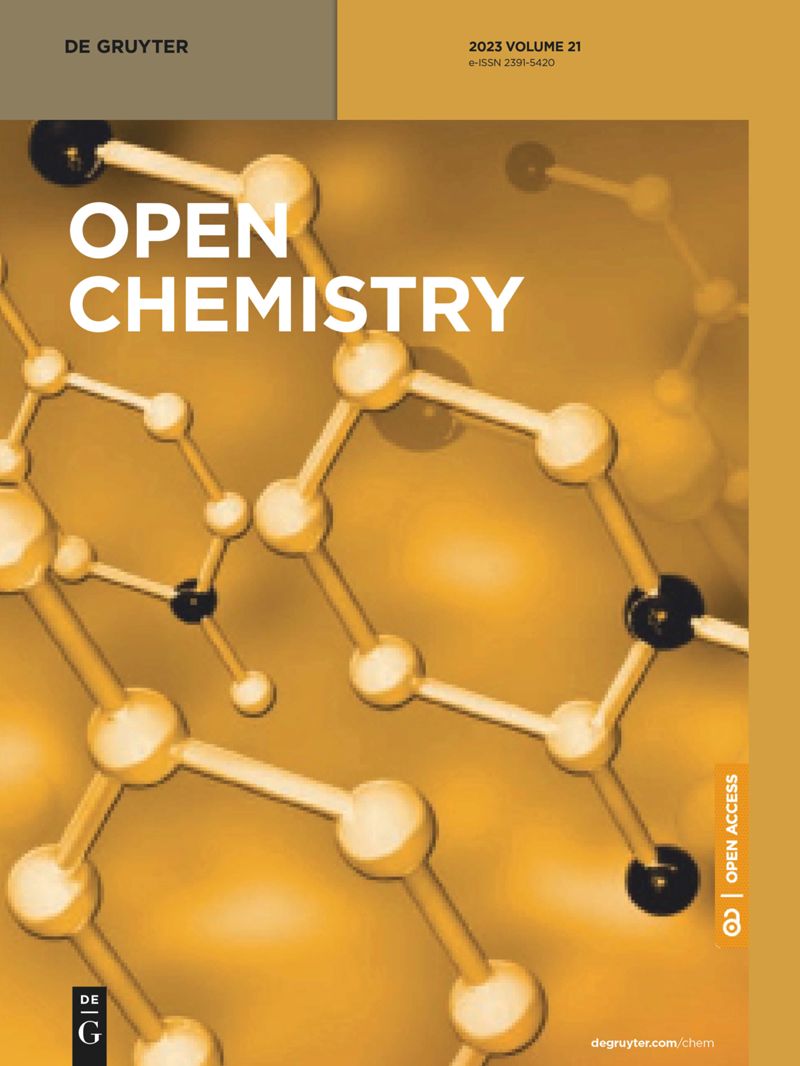Computational design and in vitro assay of lantadene-based novel inhibitors of NS3 protease of dengue virus
IF 2.1
4区 化学
Q3 CHEMISTRY, MULTIDISCIPLINARY
引用次数: 0
Abstract
Dengue virus (DENV) infection is one of the diseases for which no drug is available for the treatment. The DENV NS2B-NS3 protease is considered to be the prime target for anti-dengue drug development because of its importance in the development of new virus subunits via DENV poly-protein breakdown. Pentacyclic triterpenoids (Lantadenes) from the weed登革病毒 NS3 蛋白酶新型抑制剂的计算设计与体外检测
登革热病毒(DENV)感染是目前尚无药物可治疗的疾病之一。DENV NS2B-NS3 蛋白酶被认为是开发抗登革热药物的主要靶点,因为它在通过 DENV 多蛋白分解开发新病毒亚基方面起着重要作用。在过去的二十年中,来自杂草Lantana camara L.及其半合成同系物的五环三萜类化合物(Lantadenes)显示出了广泛的生物活性。本研究采用虚拟筛选策略对78种天然和半合成香根素类化合物库进行了筛选,以预测对 DENV 的 NS2B-NS3 蛋白酶具有强效拮抗作用的化合物,并通过先导分子的体外试验对其进行了实验验证。在对78种三萜类化合物的硅学分析中,与参考配体1,8-二羟基-4,5-二硝基蒽醌(-5.377 kcal/mol)相比,有两种先导分子(-10.60和-9.93 kcal/mol)被预测为蛋白酶(病毒)的抑制剂。同时,研究人员还进行了结合亲和力、药物动力学和毒性分析以及分子动力学模拟。体外病毒感染抑制试验推断,在 10 µM 和 5 µM 浓度下,先导分子 62 对 DENV 滴度的抑制率分别为 60% 和 45%。先导分子 62 可进一步优化其药理作用,并有可能开发成药物样分子。
本文章由计算机程序翻译,如有差异,请以英文原文为准。
求助全文
约1分钟内获得全文
求助全文
来源期刊

Open Chemistry
CHEMISTRY, MULTIDISCIPLINARY-
CiteScore
3.80
自引率
4.30%
发文量
90
审稿时长
6 weeks
期刊介绍:
Open Chemistry is a peer-reviewed, open access journal that publishes original research, reviews and short communications in the fields of chemistry in an ongoing way. The central goal is to provide a hub for researchers working across all subjects to present their discoveries, and to be a forum for the discussion of the important issues in the field. The journal is the premier source for cutting edge research in fundamental chemistry and it provides high quality peer review services for its authors across the world. Moreover, it allows for libraries everywhere to avoid subscribing to multiple local publications, and to receive instead all the necessary chemistry research from a single source available to the entire scientific community.
 求助内容:
求助内容: 应助结果提醒方式:
应助结果提醒方式:


